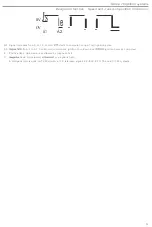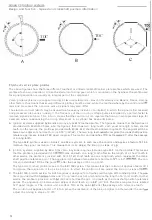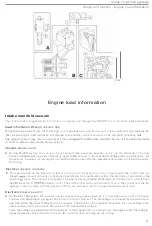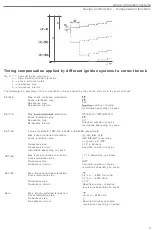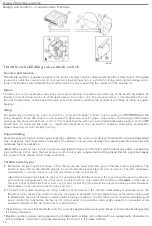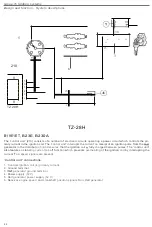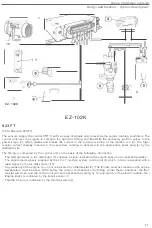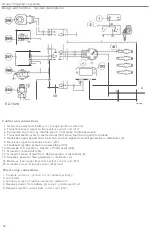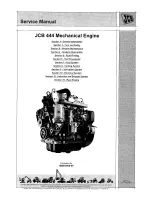
Group
28
Ignition sys
t
ems
De
sign
and
fun
c
t
ion -
Compensation
fu
nc
t
i
ons
0
I
a
b
D
_3
°
Ii"
I
D
I
I
I
•
_7
0
D
p-
-
I
.....
D
I
I
_ •
r
-
•
I
..
REX-I
Rex
-I
On
th
e
Rex-I
sys
t
em,
the
program functions which con
t
rol
the tendency
of
the
engine
to kn
ock
are somewhat
d
i
ffer
-
ent to
tho
se
i
n the
EZ
-K
sys
t
ems
.
The
differences are
des
c
ribed
in
the
following
pages
.
Knock
characteristic
Th
e figure
shows
the
'no
rmal
'
ignition se
tt
ing
assuming,
in
th
is case,
that
speed
and load
a
r
e cons
ta
nt (hence
the
extremely simplified
's
traight
'
yellow
line).
The
vertical axis
ind
ica
t
es
the
ex
t
ent
to wh
ich
th
e
timing has been
re
t
ard-
ed
in
relation
t
o
the normal
se
tt
ing,
The horizontal axis
indicates
the
t
i
m
e, as
defin
e
d by
a
ce
rtain
nu
mber
o
f
en
·
gine revolutions
.
Knock re
t
a
rd
ation
is
illu
s
trated
by
the
downward
s
teps
(red)
and re
·
advance by the
sma
ll
e
r
upward
s
t
eps upwards (blue)
.
The maximum retardation is
here deno
t
ed
by
-
1
5'
.
Knock-controlled retardation
When the
engine
is running,
the
control
unit
co
mputes
t
he optimum
igni
tion
t
iming on
t
he basis of speed and load
signals
.
The
occurrence
of
knock
in a cylinder is
detected by the
control uni
t
,
wh
ich
retards
th
e ignition
by
a step of
3"
in
the
cylinder in question
.
If the phenomenon pe
r
sis
t
s
,
the
con
trol unit
re
tar
ds the ignit
i
on by a
further
step of
In
and
so on,
until
knock
i
s e
li
minated
.
Ae-advance
at
different rates
Re-advance
of
the
i
gnit
i
on to the normal sett
i
ng
(a),
or until knock again
occurs,
takes
place at d
i
fferent
rates
depend-
ing on engine speed.
However
,
the
steps are equal in magnitude
i
n all cases
,
representing an advance of
at a
t
ime.
Once the t
i
ming has been retarded
(
to
a
or morel
(
a
),
the
succeed
i
ng re-advance steps
(
b
)
are performed tw
ic
e as
fast
.
Thus
,
the
in
terva
l '
a
'
in the f
i
gure
is
tw
ice
as
long as
'
b
'.
At
high eng
i
ne
speed,
the interval
'
a
'
dur
i
ng which
t
he
tim
i
ng
is retarded
(
to
-3"
or
more)
is
re
la
t
ively
long
.
i
n-
terval
is
e
qu
i
valent to approx.
80
revolutions
at an
engine
speed of abou
t
6000
r
I
m
i
n)
.
At
low eng
i
ne speed
,
the
corresponding interval
abou
t
half that
at
h
igh
speed lapprox
.
35 revolutions at
an
engine
speed of about
1000
rlmin
}.
The re
-
advance
rates vary across the
speed range,
becom
i
n
g slo
w
e
r
as
e
ngine
s
peed
i
n
c
rea
ses
.
34


